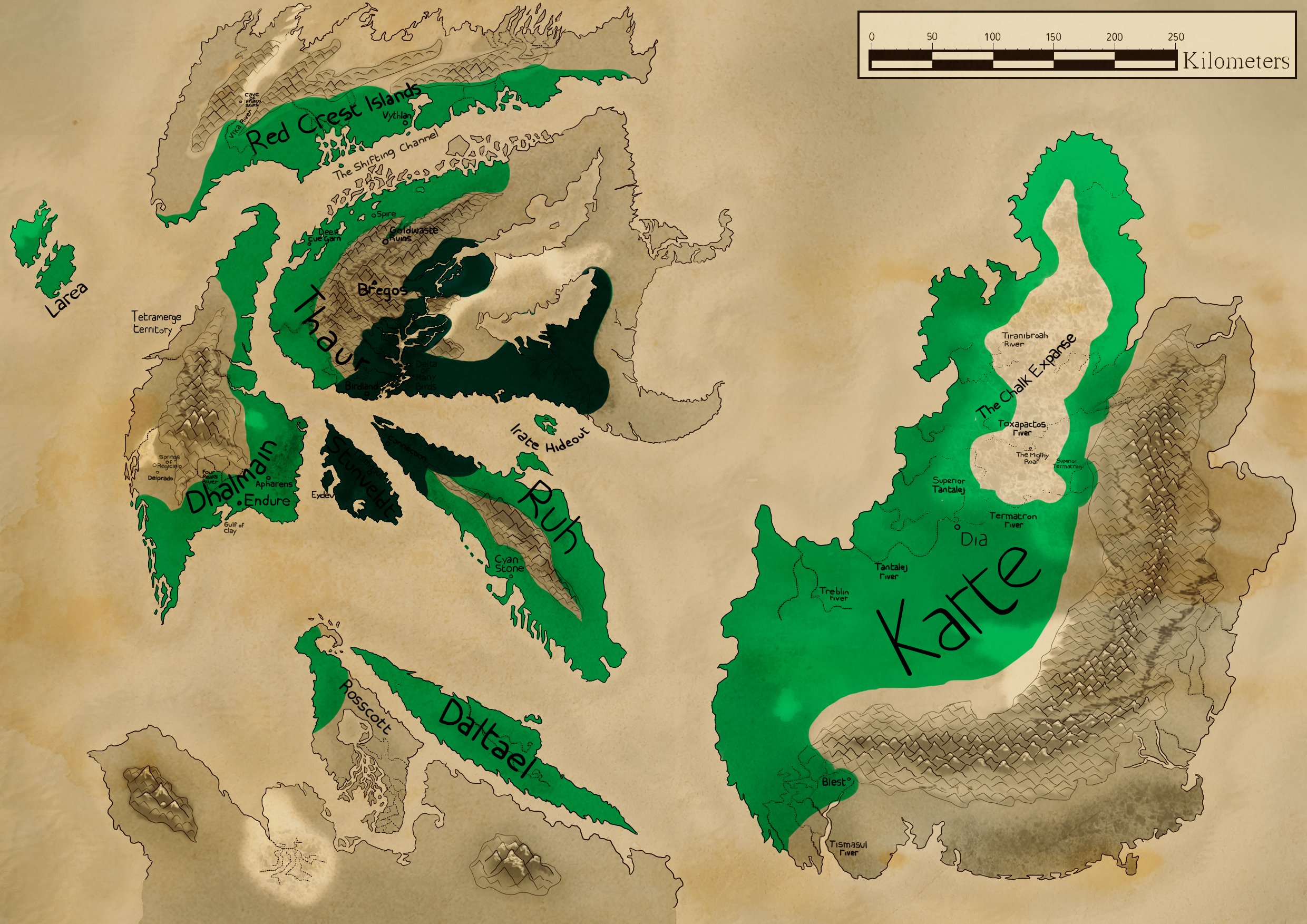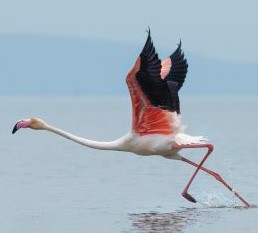Idradelta
Ubiquitous in any societarian settlement, the idradelta is the most extensively bred creature in the Haan Archipelago, with numbers far above the alzufhar and reaching even farther than the lyraik.
Their face lacks a beak and instead has a snout that points slightly downwards, with two small tusks at its sides. They have purple eyes.
In their wild-type variation, their coat is pale brown with orange and yellow highlights covering the back and part of the wings. The tip of their wings is an iridescent blue-green, and their head is dull orange with brown feather tips.
Males usually have larger tusks and wattles and stronger colours than females. As a prominent domestic creature, there are many variations of colouration and plumage, some related to more specialized uses such as having bigger bodies or laying more eggs than the wild counterpart.
Females lay eggs in nests distributed around a communal area alongside the eggs of other females, and both sexes will incubate the eggs. While they prefer to incubate the nests that contain their own clutches, it is common for an idradelta to incubate other nests if theirs are already being taken care of. Eggs hatch after a period of three to four weeks, and females take care of the chicks until they are around a month old, while the males help them find sources of food and water and protect them from external dangers.
They are usually kept in fenced areas at night to protect them from hapists and other opportunistic predators, and left to run around during the day, generally accompanied by other domestic creatures. When kept under constant access to food and shelter, idradeltas show a higher propensity to lay eggs outside of their main breeding season, sometimes laying almost every day, turning them into an excellent food source for societarian families.
Their feathers are also used widely to fill things such as pillows, mattresses, duvets, and even coats and child toys.
Biology
Anatomy
Idradeltas are medium-sized, bulky, flying birds. Their bodies are covered in feathers except for the feet, face, and the fleshy orange-red appendages under their chin and at the tip of their tail.Their face lacks a beak and instead has a snout that points slightly downwards, with two small tusks at its sides. They have purple eyes.
In their wild-type variation, their coat is pale brown with orange and yellow highlights covering the back and part of the wings. The tip of their wings is an iridescent blue-green, and their head is dull orange with brown feather tips.
Males usually have larger tusks and wattles and stronger colours than females. As a prominent domestic creature, there are many variations of colouration and plumage, some related to more specialized uses such as having bigger bodies or laying more eggs than the wild counterpart.
Behaviour
Idradeltas are simple, gregarious creatures that live in flocks. They are generally pacific creatures that prefer to escape danger, though they will band together to attack a predator or competitor if a member of their flock is caught or attacked.Reproduction
The females of the idradelta lay pale blue eggs in clutches of up to a dozen. They can lay all year long (Especially when food is plentiful), but they will mate more readily and lay more eggs at the start of spring.Females lay eggs in nests distributed around a communal area alongside the eggs of other females, and both sexes will incubate the eggs. While they prefer to incubate the nests that contain their own clutches, it is common for an idradelta to incubate other nests if theirs are already being taken care of. Eggs hatch after a period of three to four weeks, and females take care of the chicks until they are around a month old, while the males help them find sources of food and water and protect them from external dangers.
Diet
Idradeltas are omnivores, feeding on a wide variety of plants, grains, roots, and small creatures. While a lot of people assume they favour grain and crawling bugs, they will jump at any opportunity to snack on an unfortunate khom.Geographic Distribution
Idradeltas are distributed in the entire Haan archipelago, including areas usually protected from invasive species such as Larea, where they are kept under regulations to avoid colonisation by escaped individuals. Wild idradeltas originated in the tropical forests in the centre of the Haan Archipelago, with the main wild population of these birds still found in the Delta of Many Birds in the Thaur Island.Relationship with Societarians
Save for the biggest cities, a couple of domestic idradeltas can be found in most homes in the Haan Archipelago, with big flocks of them loudly grazing in farms.Domestication
The idradelta is one of the main creatures domesticated by societarians.They are usually kept in fenced areas at night to protect them from hapists and other opportunistic predators, and left to run around during the day, generally accompanied by other domestic creatures. When kept under constant access to food and shelter, idradeltas show a higher propensity to lay eggs outside of their main breeding season, sometimes laying almost every day, turning them into an excellent food source for societarian families.
Uses
Idradeltas are mostly bred for their meat and eggs, both a staple of most societarian diets.Their feathers are also used widely to fill things such as pillows, mattresses, duvets, and even coats and child toys.
Lifespan
6 years
Average Height
30 to 50 cm
Geographic Distribution








CHICKEB. <3 Sort of. I love them, they are adorable. I want some.
Explore Etrea